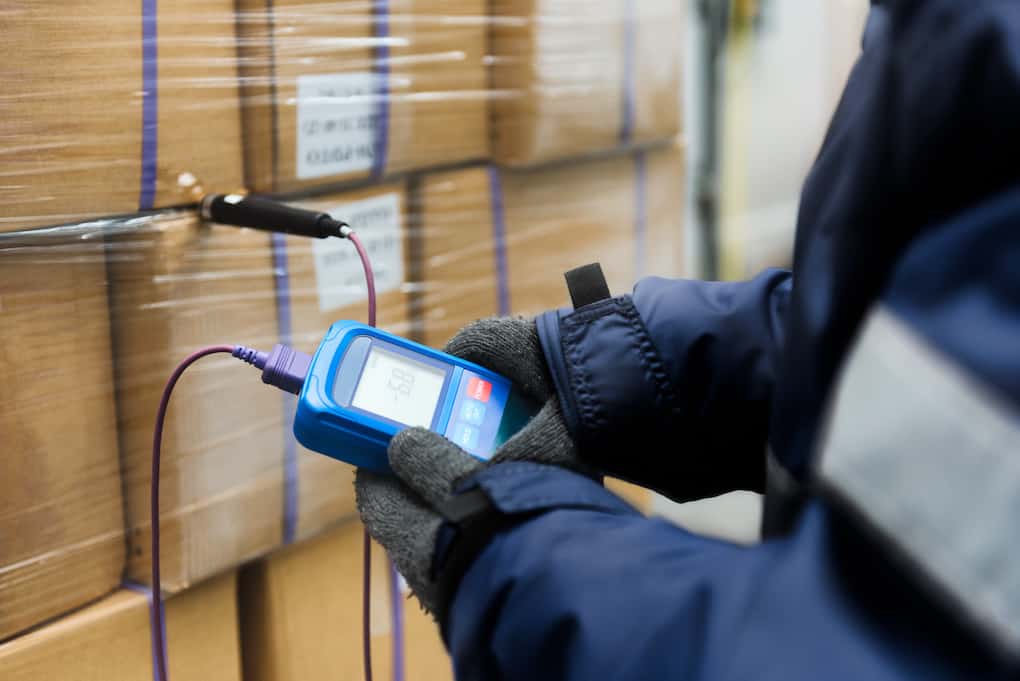Trying to cool your warehouse is one crucial part of running a cost-effective warehouse. Much like how having outdated and clunky technologies can cause inefficiencies in your operations, having too hot of warehouse can make your employees uncomfortable and distracted, causing them to slow down in their work.
Although the up-front costs can sometimes feel daunting, it’s often more profitable to operate with updated technologies and install energy-efficient air conditioning and other cooling systems to keep a warehouse cool orderly than it is to try and rely on temporary and creative workarounds.
Here are 15 of the most effective ways to cool a warehouse along with some tips for improving your operational efficiencies.
#1: Use Metal Screen Doors
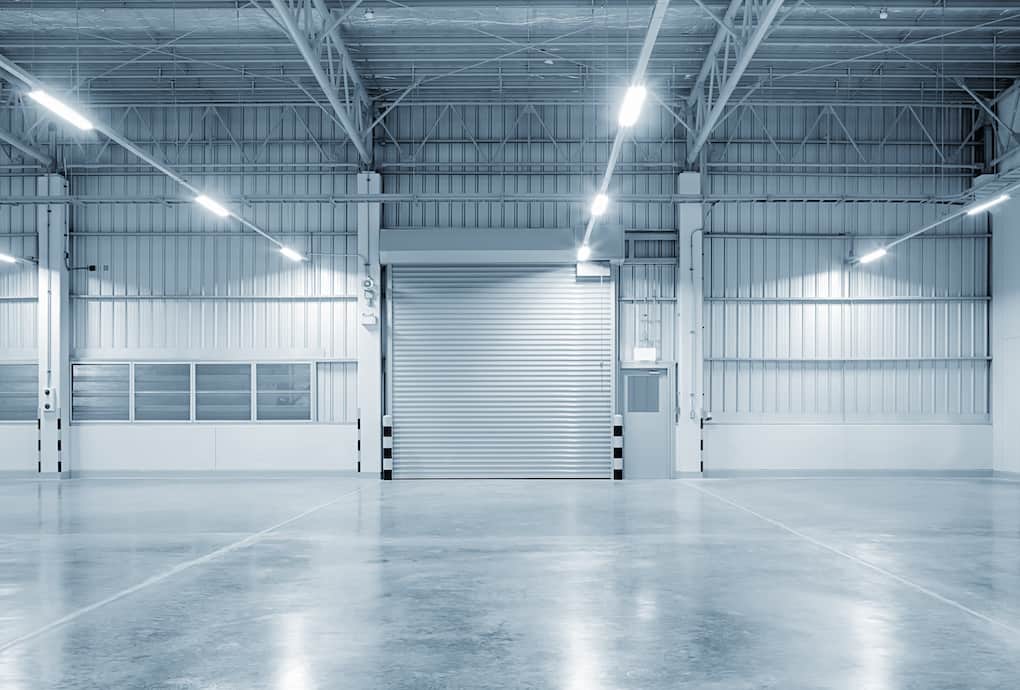
Specifically, use metal screen doors where the screen is an optional element. This lets cool air into the building from shady areas during the summer, but you can use the solid doors to keep heat in during winter. These doors will be open a lot, making it more preferable for them to be sliding door systems that don’t take up as much space while they’re open.
If you want to get fancy, you can place fans near these doors to pull outside air into the warehouse. This is far more cost-effective than most other electricity-powered cooling systems, although it only works when the air outside is cold enough to make this viable.
#2: Manage Cold Storage Systems
If you have cold storage systems in your warehouse, managing these is important for overall warehouse cooling. In this case, proper management means having a backup generator in case you lose power, as well as an alarm system to alert maintenance staff if any area gets too warm.
Furthermore, make sure the area around cold storage is especially well-insulated, and preferably the section furthest away from notable heat sources. Placing cold storage systems well will improve the efficiency of their cooling and ensure they’re as energy-efficient as possible.
#3: Manage Thermal Labels
Thermal labels are a crucial part of identifying products, and yes, managing these is part of the best practices for cooling a warehouse. Specifically, it’s important to be sure that all of your labels suit the temperature range that part of the warehouse experiences.
Some warehouse managers add cooling systems, but forget about some hot pockets near the ceilings. This can cause damage to products and labels. Managing heat correctly also means managing everything that heat could affect, not just finding ways to cool things down.
#4: Insulate Better
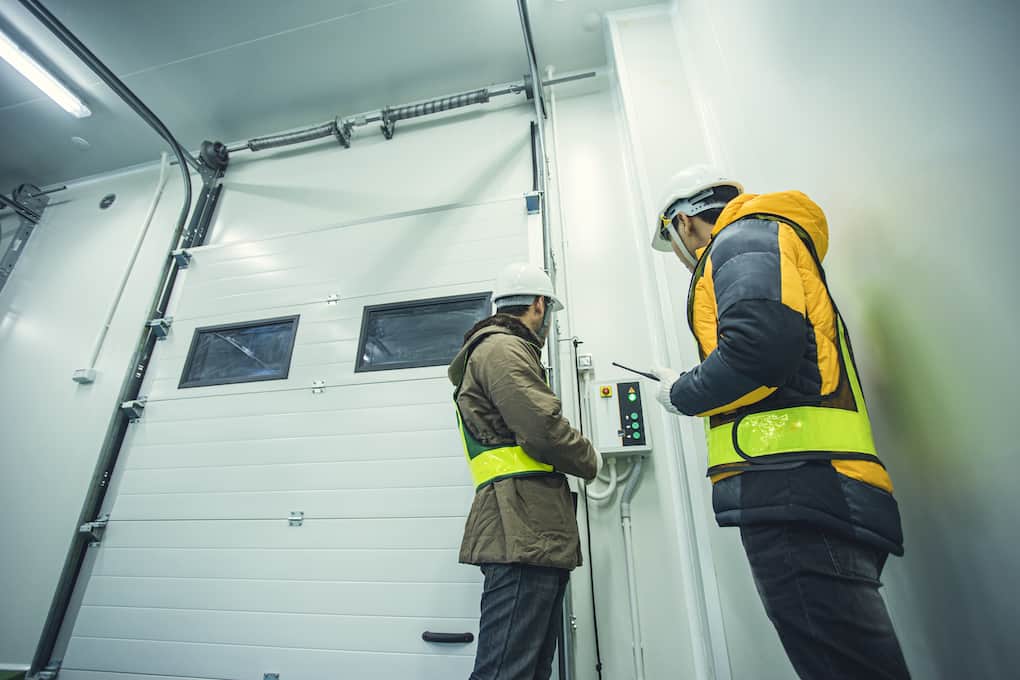
Speaking of efficiency, though, few things work better than insulating your warehouse better. Great insulation means less heat coming from outside during summer and less heat leaving from the inside during winter. You can’t perfectly insulate a busy warehouse, but you can minimize heat transfer, even in high-volume areas.
The best warehouse cooling solutions always involve thick insulation. Don’t hesitate to add more insulation in areas that need it. Shrinking your space by a few inches is better for heat management than trying to use air conditioners or other powered cooling. It’s also better for your bottom line, as even small efficiency improvements can mean huge savings.
#5: Minimize Excess Stock
Most people see warehouses as a place to store items until they’re needed, but we know that excess stock is a bad thing. It’s harder to cool down areas with lots of excess stock because boxed goods and pallets have a low surface area compared to their volume. This means it takes a long time for them to equalize their temperatures.
Reducing excess stock can also improve airflow throughout your warehouse. When possible, keep your stock at as healthy a level as possible.
Gaining visibility into and control over your inventory is key for making decisions about healthy stock levels and Extensiv 3PL Warehouse Manager has all the tools needed to help assess your specific warehouse health and change your stock accordingly.
#6: Install Dehumidifiers
Dehumidifiers are another great option for warehouse cooling. These are particularly useful in hotter, humid climates where a lot of moisture can enter from outside. Water holds more heat than air (which is why water-based cooling is more effective than air-based systems), so the more water you remove, the less heat you’ll have floating around the warehouse.
#7: Use Curtains Inside
Curtains are an excellent way to manage warehouse cooling while still allowing some privacy. Solid doors are essentially walls while closed, which means they interrupt airflow. Curtains let air pass through, helping you cool your entire warehouse instead of needing separate systems for each area.
#8: Install A Cool Roof
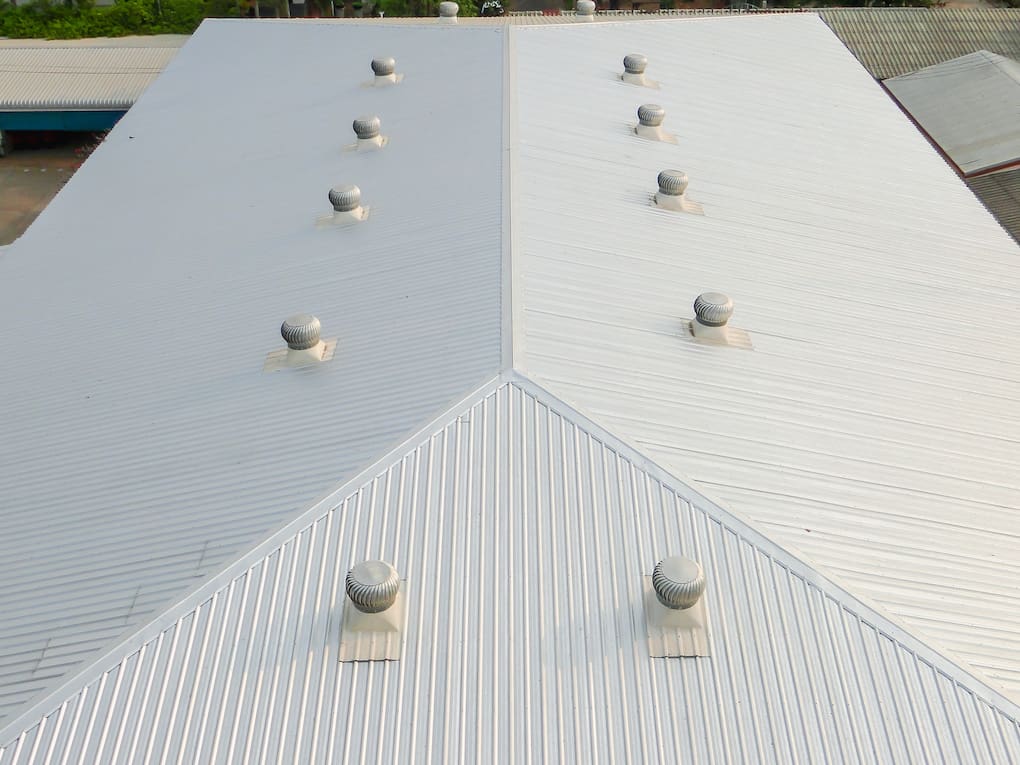
Cool roofs are a great option for warehouse cooling, and they get better the more square feet you have. If you’re not familiar with these yet, cool roofs help reflect heat, rather than absorbing it as traditional roofs do.
The problem here is that cool roofs can be expensive at first. They cost more than traditional roofs, but they’ll sharply reduce energy costs for cooling over time. Ultimately, this makes them a good investment for your warehouse, especially if you’re having trouble managing the airflow from other areas.
#9: Look Outside The Warehouse
It’s easy to overlook the area outside of warehouses when you’re trying to manage heat, but take a few moments to consider your options. One of the best ways to keep a warehouse cooler in summer is by installing trees that can provide shade. Natural cooling solutions are both practical and affordable.
This can do more to reduce your cooling costs than almost anything else. But, try to plant trees that drop their leaves during winter. This will let sunlight through and help warm the warehouse when you want that.
#10: Use Portable Air Conditioners
Portable air conditioners are energy-intensive, but they also provide outstanding spot cooling for a certain amount of square feet in warehouses. Portable air conditioning is particularly effective for offices and other small, walled-off spaces in the building, but you can also put them in areas with hot air to help equalize temperatures.
#11: Add Truck Shelters
Proper truck shelters help create a seal between the hot air of trucks and the cooler areas of your warehouse, without inhibiting the speed of transfer for goods. Installing these is vital for maximizing the effectiveness of your air conditioning.
#12: Maintain Equipment
Maintaining equipment is another key part of ensuring proper air conditioning for warehouses. This isn’t just about the cooling systems, either. Any type of motor or engine produces heat while in use, including forklifts and conveyor belt systems. Maintaining these helps ensure they’ll produce as little heat as possible, which contributes to your air conditioning efforts.
Just like having proper equipment helps your warehouse stay cool and operate efficiently, having a fully-connected and comprehensive warehouse management system can improve business and warehouse operations from your receiving dock to consumers' doorstep and everything in between.
#13: Add HVLS Fans
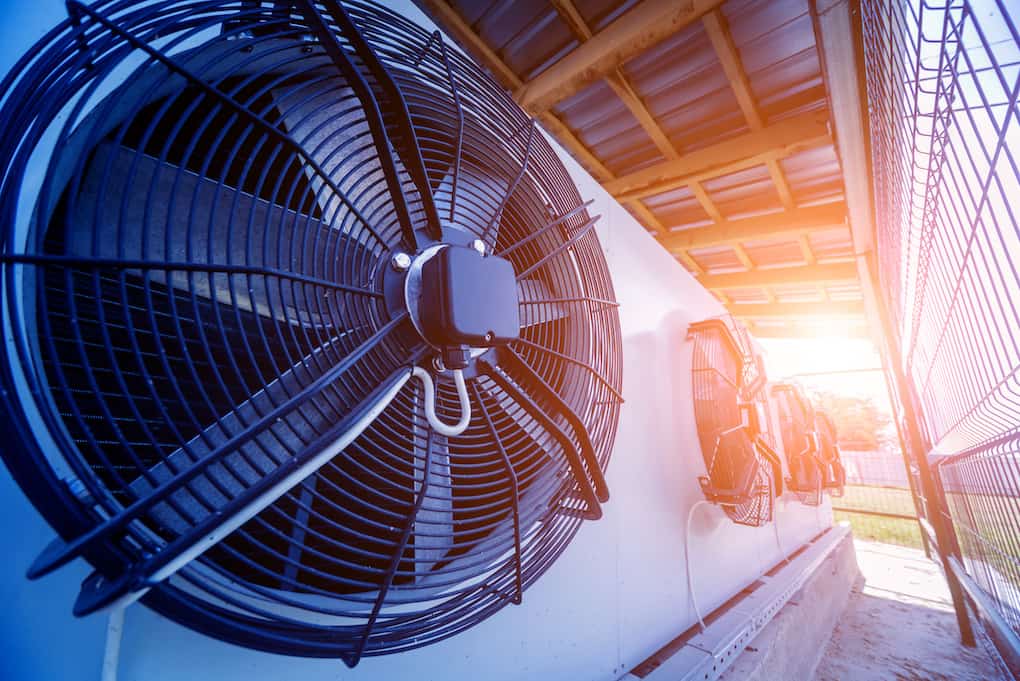
High volume, low-speed industrial fans are excellent for equalizing temperatures over large areas. They’re also extraordinarily energy-efficient, costing almost nothing to operate while improving the overall effectiveness of all other cooling systems.
#14: See If Absorption Chillers Are Viable
Absorption chillers aren’t viable in all warehouses, but they’re fantastic when you can install them because they use all the heat you’re trying to get rid of to chill water that you can use for other cooling purposes. This is a highly effective way of reducing your energy use, and therefore your cooling costs.
Even better, this sort of system is heat-powered, so it doesn’t rely on the electricity grid. You can use it to help cool a warehouse even when you lose power, assuming it’s hot enough outside.
#15: Create A Heat Map
Finally, make sure you create a heat map for your building. This won’t reduce temperatures directly, but it will tell you which areas you’re cooling properly and which areas still need work.
Quick FAQs
Here are some common questions that warehouse owners have.
How Do You Cool Your Warehouse?
There are many ways to cool down warehouses in summer, as described above. All warehouses are different, with factors like elevation, direction, and building materials affecting cooling options, so it’s always better to design a unique cooling plan instead of trying to fit a generic model.
How Do I Keep My Warehouse Employees Cool?

The best way to keep warehouse employees cool, especially in summer, is by cooling the entire warehouse well. Don’t forget to ensure there’s enough air movement at ground level to pull heat away from their bodies.
What Are The 4 Types Of Cooling?
The four types of cooling are:
- Active Cooling: These systems directly add cold air to an area to lower its temperature, and often double as heat removal systems. Air conditioners fall into this category.
- Heat Removal: Heat removal systems get rid of existing heat, but don’t add colder air. Absorption chillers are a good example of this technique.
- Temperature Equalizers: Temperature equalizers don’t cool the area, but they have a similar effect because they increase the rate temperatures equalize over a large area, mixing the cold and the hot. Warehouse fans do this.
- Preventative Cooling: Preventative cooling stops heat from entering warehouses at all. Shade trees and cool roofs do this.
How Much Does It Cost To Cool Your Warehouse?
Costs vary depending on the techniques you use, as well as how cool you want to keep things. There are too many variables to give a good answer here, so the best way to find out the cost for cooling your warehouse is by asking a qualified expert to examine your facility.
Warehouse cooling is just part of running a warehouse, but it’s an important part. Implementing the strategies above will help you get the most from other warehouse management systems like Extensiv Warehouse Manager. After all, you can’t reach your potential if your employees are too hot to work well. Ultimately, warehouse cooling is a good investment, so don’t wait to improve yours.
-
You’ll read about:
Be the first to know
Subscribe to our newsletter
